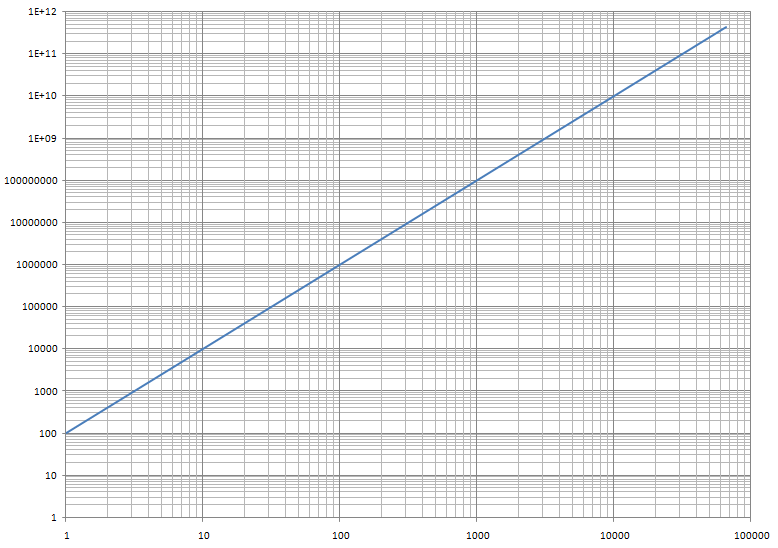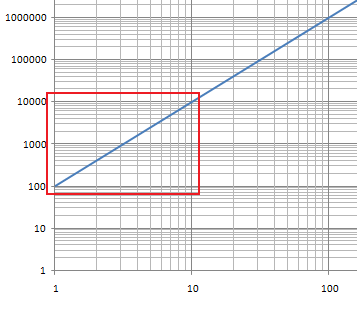To the right is a log-log plot of the power function:
y = 100x2
Power functions appear as straight lines and linear functions appear as curved lines on a log-log graph.
If this function is plotted into the calculator, the result will be a parabola (if the graph is using a regular scale).
A power function is of the form:
y = axb
Typically, a is referred to as the y-intercept (where the function intersects the y-axis when x = 0). The power b is referred to as the slope.
Usually, when y-intercept and slope are thought of, it is with respect to the linear function:
y = mx + b
Where m is the slope and b is the y-intercept.


